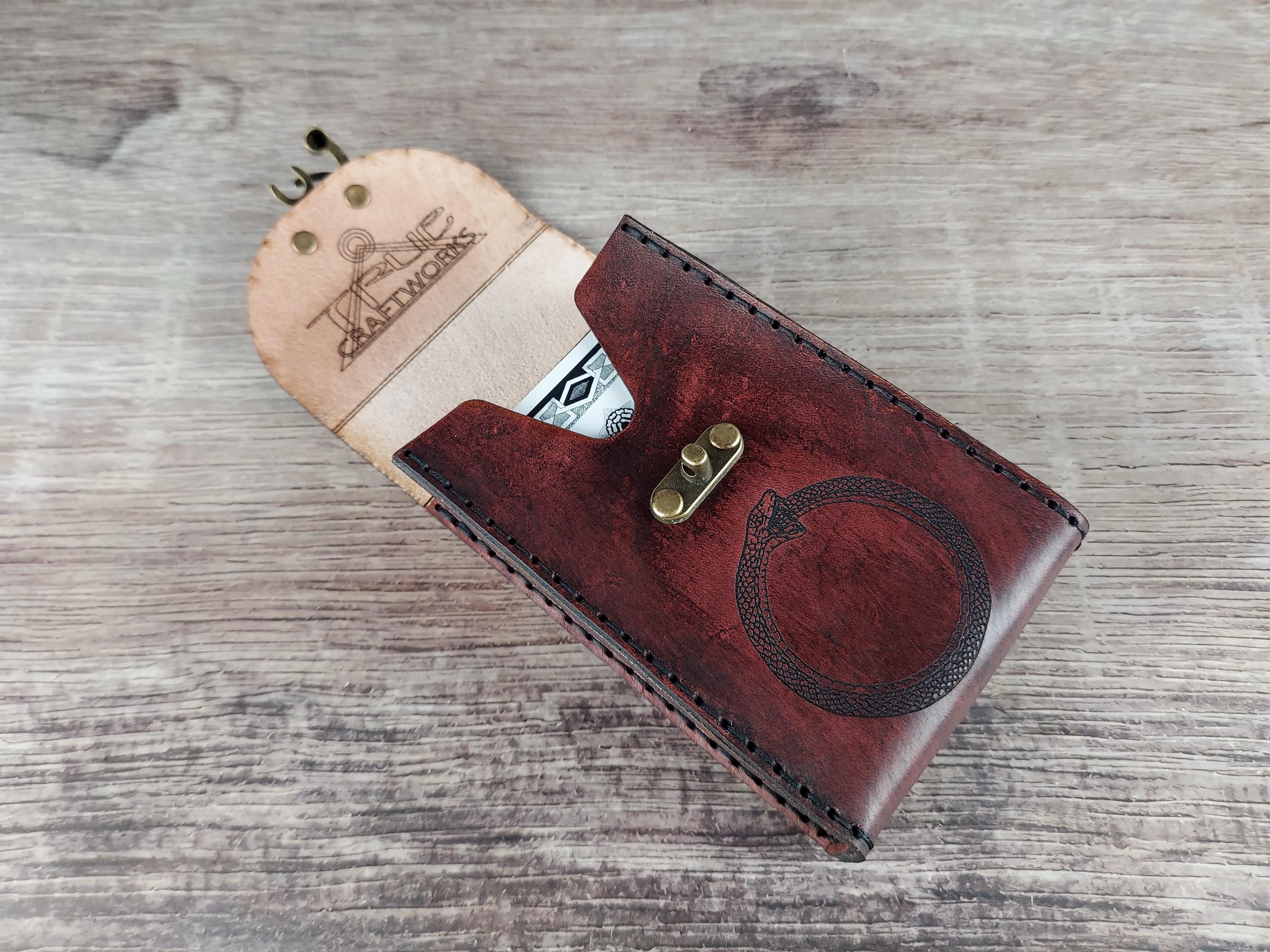Leather comes in many forms, but the tanning process is one of the key factors that define its properties. Two of the most common tanning methods are chrome tanning and vegetable tanning. Each process influences the leather's feel, appearance, workability and environmental footprint. In this post, we’ll briefly explore the key differences between chrome tanned and vegetable tanned leather.
Vegetable Tanned Leather
Vegetable tanning is an organic process to preserve a genuine cowhide. These are hides which would otherwise end up in landfills. This process uses natural tannins from plant sources, making it the more environmentally friendly choice. It’s a slow process which takes weeks to months to complete. Common plants used in the tanning process include Oak, Chestnut, Mimosa, and Willow. The slower process contributes to the higher cost of vegetable-tanned leather.
Vegetable-tanned leather makes an excellent canvas for unique and personalized leather goods. The leather is most frequently sold to craftspeople in its natural state with no dye or coloration applied. It can be dyed in an array of colors and styles, with many differently finished pieces from a single hide.
This type of leather has some rigidity to it, which helps the end product to retain its shape and integrity. Vegetable tanned leather products can be tooled, carved, and engraved with a permanent design.
Vegetable-tanned leather will soften and develop a rich patina over time, meaning the finished wallet, guitar strap or card case will develop a unique and appealing appearance as it ages, only getting better with time.
Chrome Tanned Leather
By contrast, chrome-tanned leather is quickly chemically and more inexpensively tanned, often using chromium salts. It may present toxins to the environment and manufacturing employees.
Chrome tanning produces a soft and flexible leather. The hides are often pre-dyed in an industrial setting for a more uniform appearance. A common and popular type of chrome tanned leather is called “crazy horse” which is finished with oils and waxes. We don’t use this type of leather for our card cases partially because of its softness. Our card cases are designed as a protective sanctuary for your cards, and as such should keep their shape.
We also don’t work in chrome tanned leather because we find it limiting from a creative standpoint. Chrome-tanned leather typically doesn’t respond well to tooling, engraving or detailed artistic applications and personalizations. Chrome tanned leathers are most often personalized with a simple press or “hot stamp” which may not last as long as tooling or engraving.
Before I Sign Off…..Just A Quick Word About “Vegan Leather”
It’s pretty common for people to get confused by the term “vegetable tanned leather” and may think it’s the same thing as “vegan leather”. "Vegan", faux, or PU “leather” is petroleum-based polyurethane/vinyl. It’s essentially a type of plastic.
As it breaks down over time, you may notice the surface become sticky or flaky. These small flakes are visible evidence the vegan leather is shedding microplastics into the environment. These products cannot be refinished or salvaged as they age, and contribute to more garbage and plastic in our landfills, waterways and - frighteningly - perhaps our bodies.

